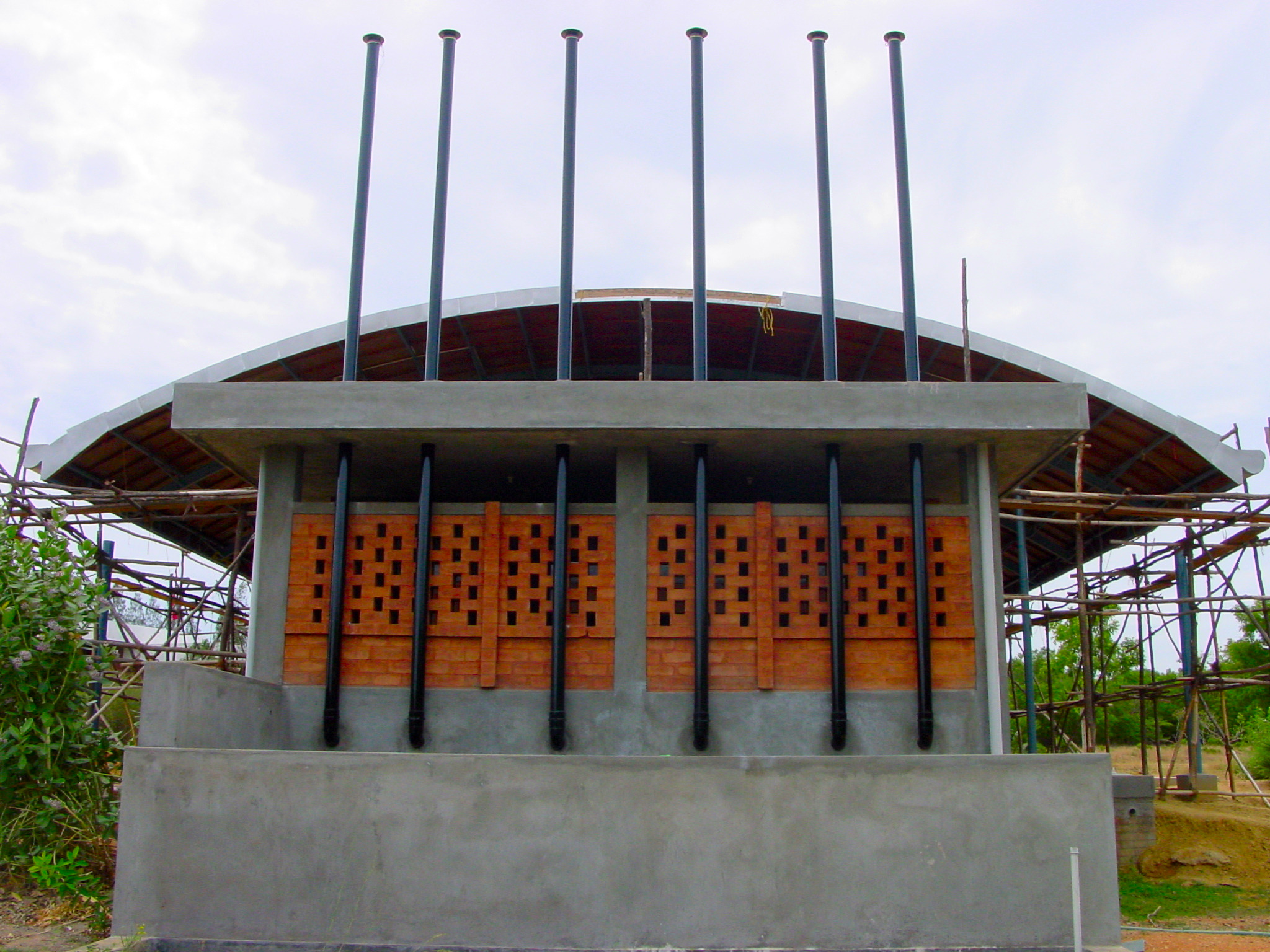


top left: Pipes ventilate the American Dormitory’s six composting toilets. Pino Marchese/UW BASIC
above left: When planted, three reed beds, part of the building’s Living Machine, will naturally filter pollutants out of the water. UW BASIC
above: Diagram of a rainwater collection system combined with a Living Machine. UW BASIC
| Location | US Pavilion, Auroville, Tamil Nadu, India |
| Date | 2002 |
| Client | Auroville International, USA; City of Auroville |
| Design Center | BASIC Initiative, College of Architecture and Urban Planning, University of Washington |
| Design Team | Sergio Palleroni with students and faculty of the Global Community Studio |
| Environmental Consultant | Charles Henry |
| Major Funding | BASIC Initiative; Auroville International, USA; University of Washington; private donations |
| Cost | $8,600 (composting toilets and waste treatment only) |
Finding environmentally safe ways to handle human waste can be one of the most challenging aspects of building in areas with little or no infrastructure.
Most of the world’s communities, especially its informal settlements, are not linked to waterborne sewage systems.
Septic tanks are often improperly maintained, leaking hazardous wastes into groundwater. However, in recent years environmental designers have developed a number of self-sustaining natural systems to safely treat waste on-site.
University of Washington students worked to incorporate such a system into the building pictured here, a dormitory for visitors from the United States to the experimental community of Auroville in Tamil Nadu, India. Working with Charles Henry, a professor of forest resources, the students devised a dual system, where black water (highly toxic solid waste) is treated in dry-composting pit latrines while gray water (urine and wastewater from sinks and showers) is treated in what’s known as a Living Machine.
The system, part of a holistic approach to the building’s design, including rainwater catchment and solar energy, requires that liquid and solid wastes be separated into two different streams. While the design team built showers in each dorm room and sinks throughout the building, toilets are centralized in a large bathroom at one end of the building. Certain toilets are designated for solid waste, others for liquid waste. The solid-waste toilets pass material to a cabinet beneath the bathrooms, where the waste sits in modified water bins for six months. The resulting compost can then be used to fertilize the building’s gardens.
The toilets for liquid wastes siphon urine into the buildings’ gray-water system, or Living Machine. In this system, first invented by eco-pioneer John Todd in the late 1980s, gray water passes into a tank where any leftover solids settle out. The liquids are then diverted to a closed reed bed where plants take up the toxins or bacteria break them down and turn them into nutrients. Finally, the nearly clean water passes through open trenches where snails, algae, frogs, small fish, and a variety of plants, including banana trees, take up any remaining toxins in the water. Living Machines such as this one have been used to treat waste for individual buildings (see “Africa Centre for Health and Population Studies”), industrial plants, and entire municipalities.
















READ OR LEAVE A COMMENT